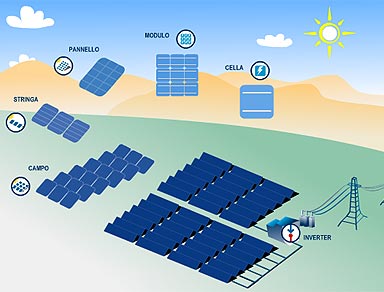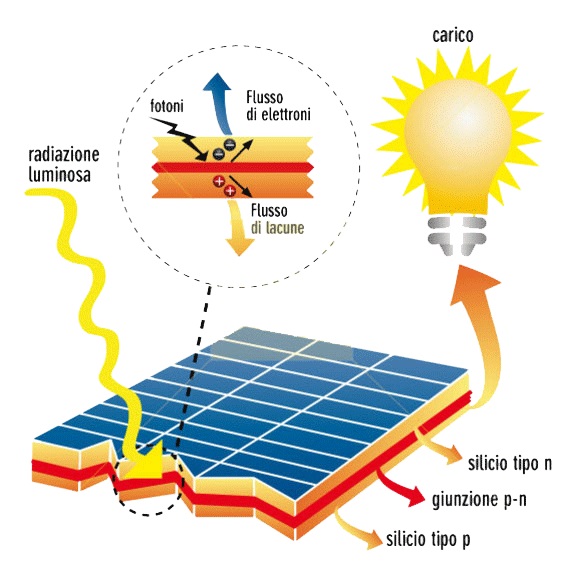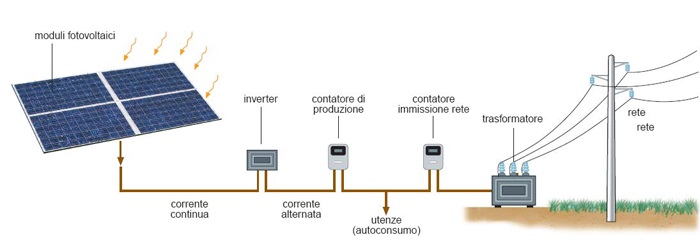 The photovoltaic system is a set of mechanical components, electrical and electronic equipment that concur to capture and transform solar energy available, making it usable as electric energy. This is performed through a physical phenomenon, well known as the photovoltaic effect (namely the ability to have some semiconductor materials appropriately stimulated, to generate electricity when exposed to light radiation).
The photovoltaic system is a set of mechanical components, electrical and electronic equipment that concur to capture and transform solar energy available, making it usable as electric energy. This is performed through a physical phenomenon, well known as the photovoltaic effect (namely the ability to have some semiconductor materials appropriately stimulated, to generate electricity when exposed to light radiation).
When photons (particles of solar energy) strike a photovoltaic cell, a part of the energy is absorbed by the material and some of the electrons, pass through the semiconductor material (suitably treated) producing a DC current that can be collected on the surfaces of the cell.
Multiple cells are connected in series or in parallel and packaged to form a module, which is the component to the base of the photovoltaic system.
Photovoltaic systems can be divided into two categories: those connected to the electricity grid (grid-connected) and those isolated (stand-alone). In the first, the generated current is sent to a converter (inverter) from which comes out in the form of alternating current, that they can be later converted into direct current medium voltage from the transformer, before being fed into the distribution line. The plants isolated instead, can feed current loads in both current (without the presence of an inverter) both in alternating current, but they are generally equipped with accumulation. In this type of photovoltaic system is necessary to store the electrical energy to ensure the continuity of supply even at times when it is not produced. This is done by electrochemical accumulators (batteries).
The network connected system, however, is not provided with storage systems because the energy produced during the hours of insolation is fed directly into the electricity grid; then during the hours of insolation little or no load is powered from the local network.


Follow us on: